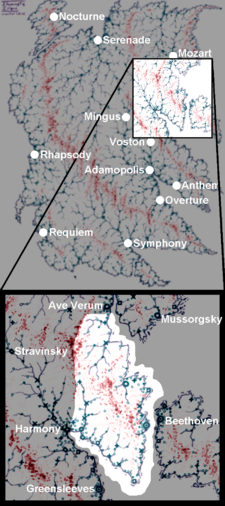Galant Peninsula
Galant Peninsula
Points of interest: Für Elise, Brahms, Lucidian Range, Ludwig van Channel
The Galant Peninsula is one of the four major peninsulas forming the irregular shape of the Illuminatian continent's eastern coast. Sometimes referred to as the "second peninsula" due to its position counting from north to south, the Galant Peninsula is Illuminatia's third-most-populous peninsula.
The Galant Peninsula is dominated by the Lucidian Range, a mountain range that divides the peninsula along a northwest-to-southeast axis. The mountainous terrain of the Lucidian Range extends all the way to the Ludwig van Channel on the peninsula's easternmost edge, providing for dramatic coastal landscapes of cliffs that rise high above the channel's waters, particularly in the vicinity of the city of Für Elise.
The Galant Peninsula is bounded on the northeast by Wolfgang Amadeus Bay and the Greater Amadeus Bay. The peninsula is bounded to the south by Brookeview Bay. The peninsula's most populous regions fall along the coast with the Greater Amadeus Bay and the northern extent of Ludwig van Channel from the city of Für Elise northward to Brahms, and secondarily along the innermost portions of Brookeview Bay's northern shore near the port cities of Mendelssohn and Pachelbel.
Much of the peninsula is covered by thick forests. The climate is dominated by cold and sometimes snowy conditions through the wintery portions of the Annual Unit and mild to warm temperatures accompanied by moderate levels of precipitation during the summer.
The major population centers on the northern half of the Galant Peninsula were settled by descendants of the third multiversal duplication of the Lucidus III ship; southerly portions of the peninsula were populated by the same multiversal duplication of the Lucidus II ship. This north-south split, formed by the Lucidian Range, also forms the boundary between significant populations of native speakers of the Demilucidian language to the north and speakers of Protolucidian Major to the south.
